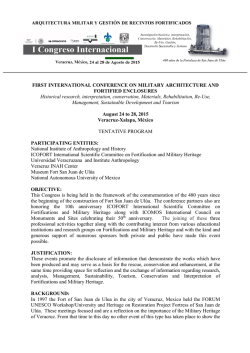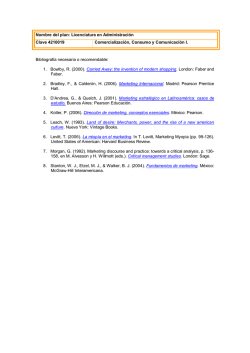
Previously saved to: rust (Word
Mexico is located in the central part of the American Continent where the Tropic of Cancer crosses. It is surrounded in eastern, western, and southern parts by sea, and has topographic and climatic diversity. Thus Mexico is covered by 32 different kinds of vegetations. Among them, tropical, arid, and semi-arid vegetatio and subtropical coniferous forests predominate. The flora consists of about 25000 species (RZEDOWSKI, 1978). The oldest record of the Mexican rust fungusis Puccinia otoppapi P. & H. SYDOW from San Luis Potosi (northern Mexico) collected by G. PRINGLE in 1890. Since then, more than 600 species in 52 genera of Uredinales have been accumulated for Mexico (HOLWAY, 1897, 1904; ARTHUR, 1905a, b ; CUMMINS, 1967; HENNEN and CUMMINS,1967; MCCAIN, 1978; López et al., 1980, 1981 ; LEON-GALLEGOSa CUMMINS,1981 ; LÓPEZ, 1982a). Two hundred and eighty-seven species are recorded in Puccinia and 115 species in Uromyces. These species of the genera consist ca 70% of the Mexican rust flora.Twenty-five species of Aecidium, 20 species of Coleosporium, 13 species of Prospodium, 9 species of Uropyxis, 8 species of Phakopsora have also been recorded. In addition, 3-6 species are recorded in 18 genera, and 1-2 species in 26 genera. Diabole, Tegillum, Frommea, Dasyspora, and Gymnoconia are monotypic in Mexico. More than 75% of the country has been little explored for rust flora.The northern and central parts characterized by arid and mountainous vegetation have scarcely been studied (Fig. 1). Life cycles of the Mexican rusts are fragmentarily known or totally unknown. Mexico has a great diversity of rust fungi comparable to Brazil, and is larger than other countries in Caribbean, Central, and South America (Table 1). But these countries have also been poorly studied for rust fungi, and thus, precise comparisons of rust flora among these countries are almost impossible. Alveolaria, Baeodromus, Gymnoconia, Gymnosporangium, Hyalopsora, Melampsorella, Phragmopyxis, Pileolaria, Polioma, and Spumula are recorded in Mexico, but not in the other areas of Caribbean, Central, and South America. Contrary, 20 genera are known in Brazil, Caribbean, and Central America, but not in Mexico (Tables 2, 3, 4) (HENNEN et al., 1982; MCCAIN, 1978; ARTHUR and JOHNSTON, 1917; STEVENSON, 1975). Some rusts exert actual or potential threats to the Mexican agriculture. More than 250 different crops are cultivated in Mexico, but only six are of economic importance; they are corn, kidney bean, sorghum, wheat, sugar cane, and coffee. Each of these crops suffers from at least one kind of rust disease(Table 5). Sunflower and safflower to the Mexican crops of economic value, and they also have their own rusts.The economic losses due to these rusts have not been adequately estimated although the rusts occur abundantly and cause food deficienc y and economic crisis (LóPEZ , 1982b ) . The rust fungi of Mexico 161 a coffee leaf rust fungus, invaded in the state of Chiapas (southern Mexico) in July of 1981. The Mexican Coffee Institute and the Department of Agriculture have carried out chemical control with Bayleton besides the improvement of coffee varieties resistant to the rust (López and CELIS, 1982). Now, the leaf rust has spread to more than 150,000 ha in three states, Chiapas, Oaxaca, and Veracruz where are major coffee producing areas (Fig. 2). It is believed the coffee leaf rust will spread soon to all the areas of coffee plantation, ca 456000 ha, in Mexico. Mycological study of the coffee rust fungus started one year after its arrival to Mexico, and the result was presented at the First National Mycological Congress held in Xalapa, Veracruz in October, 1982 (López and CELIS, 1982). Recently, we discovered the occurrence of Cronartium conigenum on Pinus species. The rust-infected scales of pine cones are used for nourishment in Veracruz ; aeciospores formed on the pine cones are called "Polvo de Pinocha" (dust of pine cone). The use of rust infected plant for nourishment is first reported for America (López et al., 1982). Phakopsora pachyrhizi was recorded for the first time on Pachyrhizus erosus. Although P. erosus was originated in Meso-America, P. pachyrhizi has not been recorded on it in Americas, but recorded in Asia. Aecidium kaernbachii was collected on Ipomoea pescaprae in the beach dunes near Veracruz city. The rust has been known only in New Guinea and India. The University of Veracruz has recently started a research project to study Mexican rust Hemileia vastatrix, fungi. The University has a herbarium óf vascular plants with more than 25,000 specimens and the experience of more than 10 years of the study of the flora of Veracruz. Acknowledgments I would like to thank Drs J.F. HENNEN (U.S.A.), Y. HIRATSUKA (Canada), and K. TUBAKI (Japan) for their kind invitation to the Symposium on the Taxonomy of Uredinales. I also thank Dr. J.F. HENNEN for financial support to the author's trip to Japan. Biologist Juventino GARCIA A., Faculty of Biological Sciences,. Universidad Veracruzana provided assistance in the investigation. Literature cited (1905a) Baedromus holwayi Arth., a new Uredineous fungus from Mexico. Ann. Mycol. 3 : 18-19. ____ (1905b) Leguminous rusts from Mexico. Bot. Gaz. 39: 385--396. AR TH UR , J. C. ____ and J. R . JO H N STO N (1917) Uredinales of Cuba. Mem. Torrey Bot. Club 17: 97-175. CUMMINS, G. B. (1967) . The Uredinales on Mexican Gramineae. The Southwestern Naturalist 12: 70 -86. HENNEN, J.F. and G.B. CUMMINS (1967). The Mexican species of Uromyces (Uredinales). Ibid., 12: 146-155. ____, M. HENNEN and M.B. FIGUEIREDO (1982) Indice das ferrugems (Uredinales deo Brasil. Publicacao conjunta do Instituto Biologico-Sao Paulo Brasil e da Universidae de Purdue, Indiana, U.S.A. HOLWAY, E.D.D. (1967) Mexican Fungi. Bot. Gaz. 24: 23-33. (1904) Mexican Uredinae. Ann. Mycol.2: 391-395. LEON-GALLEGOS, H. and G.B. CUMMINS (1981).Uredinales (royas) de México. Vols I y II, Sinaloa, México. López, A. (1982a).Avances sobre la micoflora del Estado de Veracruz First National MycologicalCongress, Xalapa, Ver. ______, (1982b) La importancia de las royas (Uredinales) en la Agricultura Mexicana.Published by The Herbarium of the BiologicalFaculty, Xalapa, Ver.México. _____, and A. CELLS (1982) Identificación de la roya del café (Hemileia vastatrix BERK. & BR.) en México y análi sis de su situación actual.First National Mycologican Congress, Xalapa, Ver. México (Abstracts) : 48. _____, et al. (1980) _____, (1981) Hongos fitopat6genos del Estado de Veracruz, Uredinales I. Bol. Soc. Mex.Mic. 14: 81--100. Hongos fitopat6genos del Estado de Veracruz, Uredinales, II. Ibid., 16: 117-140. _____, H. GARCIA and J.L. HERRADOR (1982d). Nuevos registros de hongos comestibles de la región del Cofre de Perote, Estado de Veracruz. First National Mycological Congress, Xalapa, Ver. México (Abstracts) : 30. McCain, J.W. (1978) An Illustrated multi-entry key to the rust genera of Mexico and Central America. Purdue University (M.sc. Thesis). West Lafayette, U.S.A. Rzedowski, J. (1978). Vegetación de México. LIMUSA, México. Stevenson, J. A. (1975). Uredinales. In: The Fungi of Puerto Rico and the American Virgin Island. Contribution of Reed Herbarium No. 23: 260-302. Ann. Arbor, Michigan.
© Copyright 2025






